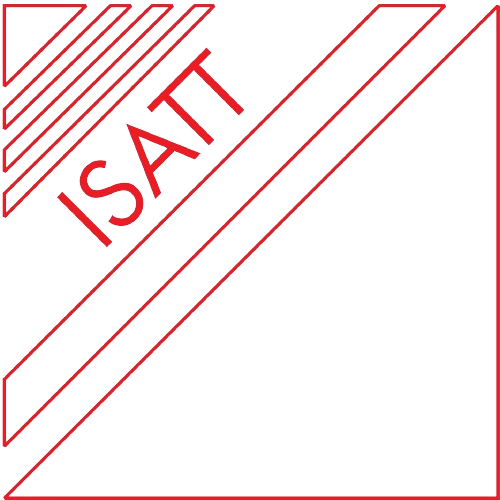Conference Description
The conference titled ” Imagining possible futures of teaching and learning” aims to address the imperative of reimagining and conceptualizing education, with a particular focus on the diverse forms that teaching and learning may assume in the future. Presently, three significant challenges delineate the forces that will shape education in new directions:
- The necessity to adapt to the evolving needs and expectations of learners, who are more diverse, interconnected, and empowered than ever before. This necessitates a reevaluation of the curriculum, pedagogical approaches, assessment methods, and support systems within education, as well as the roles and competencies of teachers and learners.
- The opportunity to leverage the potential of digital technologies, such as artificial intelligence, big data, cloud computing, and virtual reality, to enhance and personalize learning experiences, improve learning outcomes, and broaden access and equity in education. However, this also entails the consideration of ethical, social, and technical issues that must be addressed.
- The aspiration to establish a more global and inclusive education system that fosters intercultural understanding, collaboration, and innovation, while preparing learners for the complex and uncertain challenges of the future. This necessitates the development of new models and platforms for delivering and sharing education across borders and cultures, as well as engaging with diverse and emerging learners and stakeholders.
Against the backdrop of these emerging educational landscapes, the conference will serve as a forum for scholarly deliberations on the future of education within various educational and cultural contexts. It aims to facilitate the exchange of contemporary research and theories related to teaching and learning, as well as provide an opportunity for establishing networks to foster innovative initiatives across all sectors of formal, informal, and non-formal education.
The 2024 regional conference, “Imagining possible futures of teaching and learning” aligns fully with the goals of the International Study Association on Teachers and Teaching (ISATT) by addressing key inquiries, such as: What might the future of teaching and learning entail? Can educators envision and collaboratively create optimal teaching and learning experiences for all? By tackling these pressing questions, we believe that the conference will enrich and further advance ISATT’s primary objectives of generating research-based knowledge aimed at enhancing teaching and learning in the future. Within the evolving landscape of education, the conference will serve as a platform for discussing future trajectories in education across diverse educational and cultural settings. It will foster the sharing of contemporary research and theories on teaching and learning, as well as facilitate the establishment of networks to drive innovative actions in teaching and learning across all sectors of formal, informal, and non-formal education.
The conference theme aligns with the following objectives:
- To provide a forum for scholarly discussions on the future of education across diverse educational and cultural contexts.
- To share research-based data on the contemporary framework of teaching and learning, subject to scientific scrutiny and debate, and to exchange ideas on improvements and adaptations that cater to societal needs in the 21st century.
- To establish networks that promote innovative initiatives in teaching and learning across all sectors of formal, informal, and non-formal education.
Subthemes
- Future Perspectives on Teaching and Learning
- Bridging the Gap: Connecting Present and Future Teaching and Learning
- Enhancing Mental Health and Well-being through Mindfulness in Schools
- Advancing Teacher Training and Professional Development
- Promoting Inclusive Practices in Education
- Effective Management Strategies in Education
- Navigating Change in Education
- Technological Innovations and Disruptions: Exploring the potential impact of emerging technologies (such as artificial intelligence, virtual reality, or blockchain) on teaching and learning practices.
- Learner-Centric Pedagogical Approaches: Examining learner-centered pedagogies and personalized learning models that cater to individual needs, interests, and abilities.
- Identifying Future Skills and Competencies
- Redesigning the Curriculum
- Education for Sustainability
- Addressing the challenges and opportunities of Equity and Access to quality education
- Examining Teacher Roles and Professional Development
- Imagining and designing Innovative Learning Environments and Spaces
- Rethinking Assessment and Evaluation
- Analyzing Educational Policies frameworks and Governance Structures
Instructions for Abstract Submission
Individuals interested in presenting their work through oral presentations, poster presentations, or thematic symposia at the conference are requested to submit their abstracts using the online form provided on the conference website. The deadline for submission is April 30, 2024 May 25, 2024. The abstracts will be promptly reviewed by the conference reviewers. For oral and poster presentations, the abstract length should be between 1000 to 1200 words. In the case of symposia, a 400-word abstract describing the symposium topic should be submitted including the titles of the papers presented in the symposium. Authors of the individual abstracts for the symposium should follow the instructions for submitting oral presentation (between 1000 to 1200 words) including the title of the symposium.
Please access the online form on the conference website and ensure that you follow the “Instructions for Abstracts.”
Authors will be notified of the assessment of their abstracts by mid-June 2024.
To be included in the conference program and abstracts book, at least two authors (preferably the first author and one more) should register for the conference. Further details regarding the abstracts book will be provided on the conference website.
Abstract Submission Form
Please select two conference themes under which your abstract can be categorized.
The abstract should follow the following layout:
- Introduction (200 to 240 words)
- Theoretical Background (200 to 240 words)
- Method (150 to 200 words)
- Results/Outcomes (250 to 290 words)
- Conclusions/Discussion (200 to 240 words)
- Keywords
- Bibliography (300 to 400 words)
Evaluation Criteria for Abstracts
Abstracts will be evaluated by reviewers anonymously. The following criteria will be considered during the evaluation:
- Relevance of the study to the conference theme and subthemes
- Contribution of the study to scientific research
- Theoretical and methodological rigor of the study
- Applicability of the study’s findings to educational theory and practice
Authors should also note the following
- Each participant can present a maximum of two oral presentations and one thematic symposium or poster presentation, either as a single author or co-author.
- In each presentation, it is recommended to have no more than five co-authors.
- Thematic symposia should be organized by a chair and include 4-5 presentations and discussions. The symposium chair, who may also be a presenter, should submit the symposium’s general abstract (title, abstract). Additionally, each participant of the symposium should submit an individual abstract for their presentation, including the symposium title.
- Posters will be categorized under conference subthemes. The author should be present in front of their poster during the assigned session, according to the conference schedule. The recommended poster dimensions are 0.80 cm x 1.20 cm (vertical).
- Conference proceedings include the Book of Extended Abstracts (see details in this section above and in the Abstract Submission) for the accepted presentations after the blind review process. An edited volume of about twenty articles based on selected outstanding presentations in this Conference will be published from Brill in due course after the Conference.
Please ensure that the duration of oral presentations does not exceed 15 minutes.

